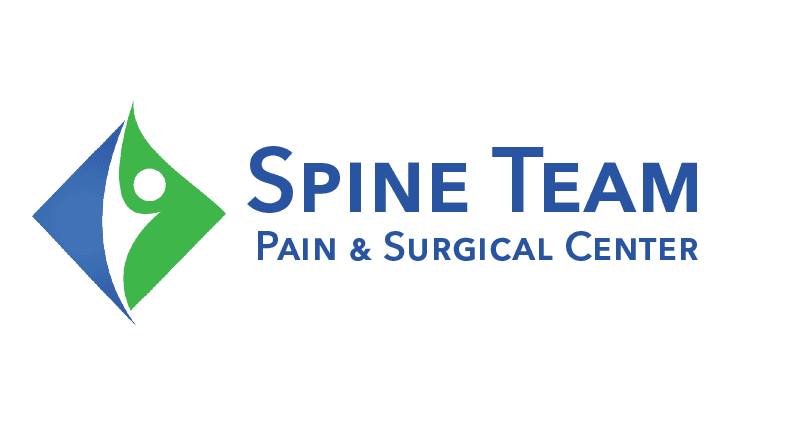What is the Best Treatment for Neck and Shoulder Pain?
Neck and shoulder pain can turn everyday activities into a challenge. This discomfort affects millions of people each year. Our blog guides you through the best treatments to ease your pain and improve mobility.
Let's find relief together.
Key Takeaways
- Apply heat or cold therapy to relax tight muscles and reduce inflammation in the neck and shoulders.
- Use over-the-counter medications like NSAIDs for pain relief when necessary, following dosage instructions carefully.
- Seek professional treatment such as physical therapy or possibly surgery if pain persists or worsens despite home remedies.
- Incorporate regular stretching and strengthening exercises into your daily routine to improve flexibility and support good posture.
- Make ergonomic adjustments to your workspace, take frequent breaks from sitting, and move around throughout the day to prevent strain on neck and shoulder muscles.
Best Ways to Relieve Neck and Shoulder Pain
Heat/ice therapy, over-the-counter medications, postural changes, and exercise/stretching are effective ways to relieve neck and shoulder pain. Read on to discover the best treatment options for your specific condition.
Heat/ice therapy
To help ease neck and shoulder pain, consider using heat or ice therapy. Applying a warm compress or taking a hot shower can help relax tight muscles and increase blood flow to the affected area, providing relief.
On the other hand, applying an ice pack for 15-20 minutes can reduce inflammation and numb the area, alleviating discomfort temporarily.
Engaging in heat/ice therapy is an effective method to manage neck and shoulder pain by promoting muscle relaxation and reducing inflammation. Heat encourages increased blood flow to the area, while cold applications help alleviate swelling and dull pain sensations.
Over-the-counter medications
When experiencing neck and shoulder pain, consider over-the-counter medications such as nonsteroidal anti-inflammatory drugs (NSAIDs) to reduce inflammation in the affected areas. These medications like ibuprofen or naproxen can help alleviate discomfort and improve mobility so that you can engage in normal activities with less discomfort.
If over-the-counter options do not provide sufficient relief, it may be necessary to seek professional treatment for a thorough diagnosis of the root cause of the pain.
Next: Seeking Professional Treatment
Postural changes
Improving your posture can help relieve neck and shoulder pain. Sit or stand up straight with your shoulders back, head level, and chin parallel to the ground. Avoid slouching or hunching over.
Make sure your computer screen is at eye level and adjust your chair for proper lumbar support. Stretch regularly to counteract the effects of prolonged sitting, walk around every hour if you have a desk job, and avoid carrying heavy bags on one shoulder.
Making simple adjustments to how you sit, stand, and move throughout the day can make a big difference in reducing neck and shoulder discomfort. It's essential to be mindful of your posture during everyday activities like driving or using electronic devices.
Exercise and stretching
Engage in regular neck and shoulder stretching exercises to improve flexibility and reduce muscle tension. Perform gentle neck rotations, shoulder rolls, and side-to-side head tilts to loosen tight muscles and alleviate discomfort.
Incorporate low-impact workouts like yoga or swimming to strengthen the muscles supporting your neck and shoulders, promoting better posture and reducing strain.
By combining exercise with targeted stretching techniques, you can effectively manage and prevent recurring neck and shoulder pain while enhancing overall mobility.
Seeking Professional Treatment
After attempting to relieve neck and shoulder pain with home remedies, it may be necessary to seek professional treatment for a proper diagnosis and more targeted approach. This can include prescription medication, physical therapy, or even surgical procedures depending on the severity of the pain.
Diagnosing the root cause
To diagnose the root cause of neck and shoulder pain, a healthcare professional may conduct a thorough physical examination. They will discuss medical history and symptoms to pinpoint potential causes such as soft tissue injuries, pinched nerves, or underlying conditions like cervical spondylosis.
Imaging tests such as X-rays, MRIs, or CT scans may be ordered to provide detailed insights into the affected areas. In some cases, electromyography (EMG) or nerve conduction studies could be performed to assess nerve function and identify any abnormalities.
Once the specific cause is identified, an appropriate treatment plan can be tailored to address the underlying issue effectively.
Prescription medication
Prescription medication can help alleviate severe neck and shoulder pain. Doctors may recommend nonsteroidal anti-inflammatory drugs (NSAIDs) or muscle relaxers to reduce inflammation and ease muscle tension.
These medications can provide relief while the body heals from any underlying injury or condition. Patients should follow their doctor's instructions carefully when taking prescription medication to manage neck and shoulder pain.
In some cases, doctors may prescribe stronger pain relievers for short-term use, but it is crucial to use them under medical supervision due to the potential for addiction and side effects.
Physical therapy
Physical therapy is a crucial part of treating neck and shoulder pain. Therapists use exercises and techniques to help alleviate discomfort, improve flexibility, and strengthen muscles.
They work closely with patients to design personalized treatment plans that target specific areas of pain and promote healing. With the guidance of a skilled physical therapist, individuals can regain range of motion, reduce stiffness, and ultimately find relief from their symptoms.
Therapeutic modalities such as ultrasound and electrical stimulation are also employed in physical therapy sessions to aid in pain management and accelerate recovery. These non-invasive treatments can complement exercise regimens, enhancing the overall effectiveness of the rehabilitation process for neck and shoulder issues.
Surgical procedures
In some cases, surgical procedures may be recommended for neck and shoulder pain that doesn't improve with other treatments. Surgeries such as cervical disc replacement or discectomy can help to relieve pressure on the nerves in the spine caused by herniated discs.
Alternatively, shoulder arthroscopy can repair damaged tissues or ligaments in the shoulder joint, often providing relief from chronic pain and improving mobility.
Recovery after surgery may require physical therapy and rehabilitation exercises to rebuild strength and flexibility in the affected areas. It's important to discuss all available options with a healthcare professional to determine if surgery is the most suitable treatment for your specific condition.
Causes and Types of Neck and Shoulder Pain
Neck and shoulder pain can be caused by a variety of factors such as poor posture, physical strain, soft tissue injuries, rotator cuff tear, whiplash, cervical spondylosis, pinched nerve, herniated disc, heart attack, and frozen shoulder.
Understanding the root cause is important in finding the best treatment for relief.
Poor posture
Poor posture can contribute significantly to neck and shoulder pain. Slouching at a desk or craning your neck forward while using a smartphone strains muscles and ligaments in the spine.
Over time, this bad posture leads to discomfort in both the neck and shoulders. To ease tension, practice holding your head directly above your spine instead of jutting forward. Adjust workstations so that screens are at eye level and use chairs that support the natural curve of your back.
Continuing with effective solutions, physical strain on neck muscles often arises from activities that involve lifting heavy objects or performing repetitive movements. Transitioning smoothly into addressing such strains requires an understanding of how they impact muscle fatigue and joint stress within the cervical area of the spine.
Physical strain
Shifting from posture-related issues, physical strain stands out as a significant cause of neck and shoulder pain. Lifting heavy objects incorrectly or overdoing it during exercise can result in muscle strain around the shoulder blades and upper back.
Activities that involve repetitive movements or awkward positions often pressure the spinal cord and surrounding muscles, leading to discomfort and sometimes chronic pain.
To prevent such injuries, always use proper lifting techniques by keeping your spine aligned and the weight close to your body. Engage core muscles when you pick up anything heavy, ensuring you lift with your legs rather than your back.
For those experiencing pain due to physical strain, gentle stretching exercises can help relieve tight muscles; coupled with hot and cold therapy using heating pads or ice packs may reduce swelling and inflammation effectively.
If this kind of pain persists, consulting a physical therapist may provide specialized strengthening exercises tailored to aid recovery without exacerbating the injury.
Soft tissue injuries
Soft tissue injuries in the neck and shoulder are typically due to damage or strain affecting muscles, ligaments, and tendons. A sudden twist or an awkward movement can stretch soft tissues beyond their limits, resulting in painful tears or inflammation.
It's common for patients experiencing a stiff neck or trouble moving their shoulders to be suffering from this kind of injury.
Easing the discomfort from these injuries often involves rest combined with ice to reduce inflammation and heat therapy for relaxation. Gentle stretching exercises help maintain flexibility and strengthen surrounding muscle groups which support recovery.
Healthcare professionals may recommend physical therapy, transcutaneous electrical nerve stimulation (TENS), or nonsteroidal anti-inflammatory drugs (NSAIDs) as part of a comprehensive treatment plan tailored specifically for relieving pain caused by soft tissue damage in the neck and shoulders.
Rotator cuff tear
After discussing soft tissue injuries, it's important to note that a rotator cuff tear is another common cause of shoulder pain. This type of injury occurs when one or more tendons in the shoulder are torn, leading to pain and decreased range of motion.
Rotator cuff tears can be caused by repetitive overhead movements, trauma from a fall, or degeneration over time. It's essential to seek medical attention if you suspect a rotator cuff tear, as early treatment can prevent further damage and improve recovery outcomes.
Moreover, receiving an accurate diagnosis and appropriate treatment such as physical therapy or even surgical intervention may be necessary for severe cases. Ignoring the symptoms might lead to chronic shoulder instability and weakness.
Whiplash
Whiplash occurs when the head is suddenly jerked backward and then forward, straining the neck's soft tissues. Symptoms can include neck pain, stiffness, headaches, and shoulder pain.
Seek medical attention if you experience these symptoms after a car accident or sports injury to receive an accurate diagnosis and appropriate treatment.
Treatment for whiplash may involve rest, physical therapy exercises to strengthen the neck muscles, over-the-counter pain relievers like nonsteroidal anti-inflammatory drugs (NSAIDs), ice or heat therapy, and in some cases muscle relaxants prescribed by a doctor.
Cervical spondylosis
Cervical spondylosis is a condition characterized by the degeneration of the cervical spine, leading to neck and shoulder pain. Bone spurs and herniated discs can develop, causing pressure on the nerves in the spinal canal.
This can result in symptoms such as muscle weakness, tingling sensations, and numbness in the arms. Seeking professional diagnosis and treatment is crucial for managing cervical spondylosis effectively.
Prescription medication may be advised to alleviate pain and inflammation associated with cervical spondylosis. Additionally, physical therapy can help strengthen muscles and improve flexibility in the neck and shoulders.
Pinched nerve
A pinched nerve occurs when too much pressure is applied to a nerve by surrounding tissues, such as bones, cartilage, muscles or tendons. Symptoms may include numbness, tingling, burning sensation or muscle weakness.
Treatment often involves rest and avoiding activities that worsen the symptoms. Gentle stretching exercises and physical therapy can also help alleviate symptoms and prevent further aggravation of the nerve.
After addressing a pinched nerve, it's crucial to understand the importance of seeking professional treatment in cases where non-invasive methods do not provide relief. Seeking timely assistance from medical professionals can lead to accurate diagnosis and appropriate treatment plans for long-term relief.
Herniated disc
Moving on from a pinched nerve, another possible cause of neck and shoulder pain is a herniated disc. This occurs when the soft center of a spinal disc pushes through a crack in the tougher exterior casing.
To relieve discomfort, heat/ice therapy can help reduce inflammation and relax muscles, while over-the-counter medications like nonsteroidal anti-inflammatory drugs offer pain relief.
In severe cases, seeking professional treatment and physical therapy may be necessary to address the root cause and strengthen the affected area through targeted exercises.
Stretching and exercising are vital for preventing neck and shoulder pain caused by herniated discs. Making postural changes can also alleviate pressure on the spine, reducing strain in these areas.
Heart attack
If you experience sudden and severe pain in your neck or shoulder, along with chest discomfort, shortness of breath, and dizziness, seek immediate medical attention. Call 911 or emergency services right away to receive the necessary treatment for a heart attack.
Do not delay seeking help if you suspect that your symptoms may indicate a cardiac issue.
In the event of a heart attack, follow medical instructions closely and adhere to any prescribed medications and lifestyle changes post-treatment. Prioritize regular check-ups with your healthcare provider in order to monitor your heart health and prevent future occurrences.
Frozen shoulder
Moving on from the potential threat of a heart attack, another cause of neck and shoulder pain is frozen shoulder. This condition involves stiffness and pain in the shoulder joint that can significantly limit movement and comfort.
It often develops gradually, progressing through three stages: freezing, frozen, and thawing. While the exact cause is not always clear, factors such as immobility due to injury or surgery can contribute to its onset.
Treatment may involve physical therapy exercises to improve flexibility and reduce discomfort, along with anti-inflammatory medication for pain management.
Prevention and Self-Care
Maintaining good posture, regular stretching and exercising, taking breaks and moving around, and making ergonomic workplace changes are essential for preventing neck and shoulder pain.
By incorporating these self-care practices into your daily routine, you can minimize the risk of developing discomfort in your neck and shoulders.
Maintaining good posture
To maintain good posture helps to relieve neck and shoulder pain. Sit up straight, shoulders back, and align your ears with your shoulders. Avoid slouching at your desk or hunching over when using electronic devices.
When standing, distribute weight evenly on both feet and keep your knees slightly bent. Change positions frequently to prevent stiffness and tension in the muscles.
Strengthening core muscles through exercise will also support proper posture, reducing strain on the neck and shoulders. It is essential to remember that maintaining good posture while sitting, standing, and moving about can significantly alleviate neck and shoulder discomfort.
Stretching and exercising
To maintain a strong and flexible neck and shoulder, engaging in regular stretching and exercising is crucial. Gentle neck stretches such as tilting your head from side to side can help relieve tension and improve flexibility.
Shoulder rolls and arm circles can also alleviate stiffness and promote better range of motion. Incorporating exercises that strengthen the muscles supporting the neck and shoulders, like shoulder shrugs or resistance band exercises, can aid in reducing discomfort and enhancing stability.
Additionally, participating in activities such as yoga or Pilates can contribute to improved posture, reduced muscle strain, and enhanced overall wellness for those experiencing neck and shoulder pain.
Taking breaks and moving around
To prevent neck and shoulder pain, make sure to take breaks and move around regularly. Standing up from your desk or workstation every 30 minutes can help alleviate muscle tension and improve circulation.
Stretching your neck, shoulders, and upper back during these breaks can also reduce stiffness and discomfort.
When you are sitting for long periods, remember to stand up and gently stretch your arms, roll your shoulders backward, lean from side to side, or perform simple neck stretches. Moving around frequently helps prevent muscle fatigue and strain in the neck and shoulder area.
Making ergonomic workplace changes
Consider adjusting the height of your desk and chair to ensure that your elbows are at a 90-degree angle while typing. Use a keyboard tray or wrist rest for proper arm positioning.
Position your computer monitor at eye level, around an arm’s length away, to reduce strain on your neck and shoulders. Take short breaks to stand up, stretch, and walk around to relieve muscle tension.
When possible, use a hands-free headset or speakerphone during long phone calls to avoid cradling the phone between your neck and shoulder. Organize your work materials within easy reach to minimize reaching and twisting movements that could strain your neck and shoulders.
Conclusion
It's important to seek professional treatment for persistent neck and shoulder pain. Seeking the guidance of a healthcare professional can help diagnose the root cause of the discomfort, leading to tailored treatment plans that may include prescription medication or physical therapy.
Additionally, preventive measures such as maintaining good posture, regular stretching and exercising, taking breaks, and ergonomic workplace changes can significantly reduce the risk of recurring pain.
Taking proactive steps toward relief and prevention is crucial for managing neck and shoulder pain effectively.
FAQs
1. How can I relieve neck and shoulder pain?
To relieve neck and shoulder pain, you can try exercises, maintain correct posture, take nonsteroidal anti-inflammatory drugs as needed, or apply heat with a warm shower.
2. Are there specific exercises that help with neck pain?
Yes! Neck pain exercises often involve gentle stretches where you lean forward or turn your head from one side to the other while keeping your elbows close to your body.
3. Does it matter if my shoulder pain is on the left side or right side?
The best treatment for shoulder pain depends on whether it's in your left arm or right shoulder; however, treatments like stretches and correct posture generally work for both sides.
4. What should I do if the nerve roots in my neck are causing me discomfort?
If discomfort comes from nerve roots being pinched, finding a comfortable position and sometimes medication may help; always consult a healthcare professional for advice specific to this condition.
5. Can taking medicine really help with my neck and shoulder problem?
Taking nonsteroidal anti-inflammatory drugs may reduce inflammation and relieve pain in some cases of neck and shoulder issues; remember to use them responsibly according to medical guidance.





